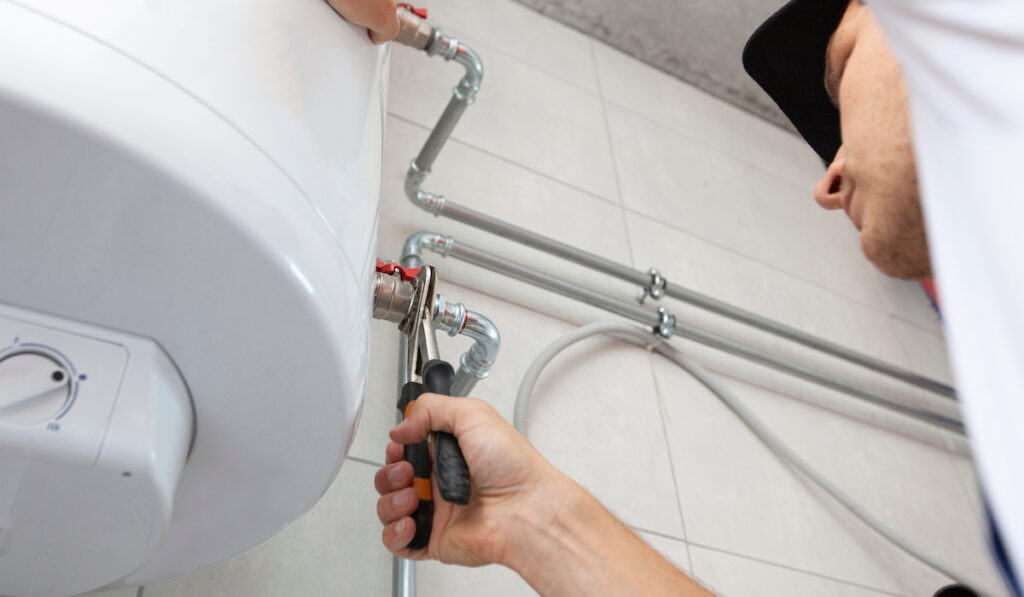Essential Guidance on Maintaining Your Home's Hot Water SystemEssential Care Strategies for Your Home's Hot Water SystemEasy Steps to Maintaining Your Home's Hot Water System
Essential Guidance on Maintaining Your Home's Hot Water SystemEssential Care Strategies for Your Home's Hot Water SystemEasy Steps to Maintaining Your Home's Hot Water System
Blog Article
This post underneath on the subject of What Kind of Maintenance Do Water Heaters Need? is rather insightful. Don't miss it.

Hot water is important for day-to-day convenience, whether it's for a refreshing shower or cleaning recipes. To guarantee your hot water system runs efficiently and lasts much longer, normal upkeep is key. This write-up supplies practical tips and insights on exactly how to keep your home's warm water system to avoid interruptions and costly repair work.
Introduction
Preserving your home's warm water system might seem difficult, yet with a couple of simple actions, you can ensure it runs smoothly for many years to come. This overview covers every little thing from understanding your hot water system to DIY maintenance pointers and recognizing when to hire professional help.
Value of Keeping Your Warm Water System
Normal maintenance not just prolongs the life-span of your warm water system however additionally ensures it runs successfully. Disregarding upkeep can result in reduced effectiveness, greater power bills, and even early failing of the system.
Indications Your Warm Water System Needs Upkeep
Understanding when your warm water system needs focus can avoid significant problems. Watch out for signs such as inconsistent water temperature, weird sounds from the heater, or corroded water.
Recognizing Your Warm Water System
Before diving right into upkeep tasks, it's handy to recognize the basic elements of your warm water system. Generally, this includes the water heater itself, pipes, anode rods, and temperature controls.
Monthly Upkeep Tasks
Regular monthly checks can help catch minor issues prior to they intensify.
Flushing the Water Heater
Purging your hot water heater gets rid of debris build-up, enhancing performance and extending its life.
Monitoring and Changing Anode Rods
Anode poles stop rust inside the storage tank. Examining and changing them when broken is vital.
Evaluating and Changing Temperature Setups
Readjusting the temperature setups makes certain ideal performance and safety and security.
DIY Tips for Upkeep
You can perform a number of upkeep jobs on your own to keep your warm water system in leading problem.
Looking for Leaks
Consistently inspect pipes and links for leaks, as these can cause water damage and greater expenses.
Examining Pressure Relief Valves
Checking the stress safety valve ensures it works correctly and protects against too much stress buildup.
Insulating Pipes
Insulating hot water pipes reduces heat loss and can save energy.
When to Call an Expert
While DIY upkeep is advantageous, some concerns call for professional expertise.
Facility Concerns Calling For Expert Help
Instances include major leaks, electric problems, or if your water heater is continually underperforming.
Regular Professional Maintenance Conveniences
Specialist maintenance can consist of detailed assessments, tune-ups, and making certain conformity with security criteria.
Verdict
Regular upkeep of your home's warm water system is necessary for efficiency, durability, and price savings. By following these tips and understanding when to look for expert aid, you can make certain a trusted supply of warm water without unanticipated disturbances.
How to Maintain an Instant Hot Water Heater
Before tinkering with your hot water heater, make sure that it’s not powered on. You also have to turn off the main circuit breaker and shut off the main gas line to prevent accidents. Also turn off the water valves connected to your unit to prevent water from flowing into and out of the appliance. 2. When you’re done, you have to detach the purge valves’ caps. These look like the letter “T” and are situated on either side of the water valves. Doing so will release any pressure that has accumulated inside the valves while at the same time avoid hot water from shooting out and burning your skin. 3. When the purge valves’ caps are removed, you have to connect your hosing lines to the valves. Your unit should have come with three hoses but if it didn’t, you can purchase these things from any hardware or home repair shops. You can also get them from retail stores that sell water heating systems. Read the user’s manual and follow it to complete this task properly. When the hosing lines are connected, open the purge port’s valves. 4. You should never use harsh chemical cleaners or solutions when cleaning your unit. Make use of white vinegar instead. It should be undiluted and you’ll probably use about 2 gallons. 5. Now flush your water heater. This task should probably take about 40 minutes. We can’t give you specific directions for this because the procedure is carried out depending on the type, model and brand of your heater. With that being said, refer to the user’s manual. 6. When you’re done draining the unit, you have to turn off the purge port valves again. Remove the hosing lines that you earlier installed on each of the water valves. Put the valve caps (purge port) back in their respective places and be very careful so as not to damage the rubber discs that are found inside these caps. 7. Now that everything’s back in place, check your user’s manual again to find out how to reactivate your water heating system. 8. Once it is working, turn one of your hot water faucets on just to let air pass through the heater’s water supply pipes. Leave the tap on until water flows smoothly out of it. https://www.orrplumbing.com/blog/2014/september/how-to-maintain-an-instant-hot-water-heater/

We were introduced to that report about How to Maintain Your Water Heater & Prolong its Life from someone on a different website. Liked our blog posting? Please share it. Let someone else check it out. Thank you for taking the time to read it.
Call Today Report this page